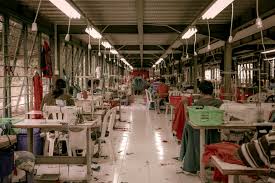The fashion industry has undergone significant transformations over the centuries, evolving from handmade garments to a global multi-billion-dollar sector characterized by rapid trends and mass production. This article explores the journey of the fashion industry, highlighting key developments and their impact on society.
Historical Roots
The origins of fashion can be traced back to ancient civilizations where clothing was primarily functional. In ancient Egypt, clothing denoted social status, with pharaohs and high-ranking officials adorned in elaborate garments made from fine materials like linen. Similarly, in ancient Rome, clothing indicated a person’s rank and profession, with togas and stolas serving as prominent examples.
The Middle Ages saw the rise of guilds, which were associations of artisans and craftsmen who controlled the production and sale of goods, including clothing. Tailoring became a recognized profession, and garments were custom-made for wealthy individuals. This period also witnessed the emergence of sumptuary laws, which regulated what individuals could wear based on their social standing.
The Birth of Haute Couture
The 19th century marked a pivotal moment in fashion history with the advent of haute couture in Paris. Charles Frederick Worth, often considered the father of haute couture, established the first fashion house in 1858. Worth’s designs were characterized by their luxurious fabrics, intricate details, and impeccable craftsmanship. His success paved the way for other designers, and Paris soon became the fashion capital of the world.
Haute couture brought about a shift in the fashion industry, emphasizing the importance of creativity and exclusivity. Designers like Coco Chanel and Christian Dior revolutionized women’s fashion with their innovative designs. Chanel introduced the concept of the “little black dress” and popularized casual elegance, while Dior’s “New Look” redefined femininity with its cinched waist and voluminous skirts.

The Rise of Ready-to-Wear
The mid-20th century witnessed the rise of ready-to-wear fashion, which democratized style by making fashionable clothing accessible to a broader audience. This shift was driven by advancements in technology and manufacturing processes, allowing for mass production of garments. Designers like Yves Saint Laurent and Mary Quant played significant roles in popularizing ready-to-wear fashion.
Yves Saint Laurent’s introduction of the “Rive Gauche” line in 1966 was a game-changer, offering high-quality, affordable clothing to the masses. Similarly, Mary Quant’s mini skirt became a symbol of the 1960s youth culture, challenging traditional norms and paving the way for more experimental fashion.
Globalization and Fast Fashion
The late 20th and early 21st centuries saw the globalization of the fashion industry. Brands like Zara, H&M, and Forever 21 revolutionized the market with the concept of fast fashion, characterized by rapid production cycles and affordable prices. These companies capitalized on global supply chains, outsourcing production to countries with lower labor costs.
Fast fashion has made trendy clothing accessible to a global audience, but it has also raised concerns about environmental sustainability and labor practices. The industry’s reliance on cheap materials and labor has led to a rise in textile waste and poor working conditions in garment factories. As a result, there has been a growing movement towards sustainable fashion, with consumers demanding transparency and ethical practices from brands.
The Digital Revolution
The digital revolution has further transformed the fashion industry, with the rise of e-commerce and social media reshaping how consumers interact with brands. Online platforms like Instagram and TikTok have become powerful marketing tools, allowing designers and influencers to reach a global audience instantaneously. Social media has also democratized fashion, giving rise to a new generation of influencers and content creators who challenge traditional notions of style.
E-commerce giants like Amazon and ASOS have disrupted traditional retail models, offering consumers the convenience of shopping from home. Virtual fitting rooms and augmented reality experiences are also changing the way people shop for clothes, providing a more personalized and interactive experience.
The Future of Fashion
As the fashion industry continues to evolve, sustainability and technology are expected to play crucial roles in shaping its future. Brands are increasingly adopting eco-friendly practices, such as using organic materials, reducing waste, and implementing circular fashion models. The rise of rental and resale platforms is also contributing to a more sustainable approach to fashion consumption.
Technology will continue to drive innovation in the industry, with developments in artificial intelligence, 3D printing, and blockchain expected to revolutionize design, production, and retail processes. AI-powered design tools are enabling designers to create more efficiently, while 3D printing is opening up new possibilities for customization and on-demand production. Blockchain technology is being explored for its potential to enhance transparency and traceability in supply chains.
In conclusion, the fashion industry has come a long way from its humble beginnings, evolving through various phases of creativity, mass production, and digital innovation. As it moves forward, the industry must balance the demands of a global market with the need for sustainability and ethical practices, ensuring a vibrant and responsible future for fashion.
